 Hope in Paris Jane Grey, PhD Paris, France
Hope in Paris Jane Grey, PhD Paris, FranceThe story of Hope the Wood Pigeon born in my Parisian window box.
Quotes on hope and birds. A short essay on the creative power of hope.
In late June 2008, a Wood Pigeon couple began to trash the geraniums in the flower box of my office window. I chased the pigeons away several times, but they persisted. Then I noticed a nest. I decided to let them stay and see what would happen...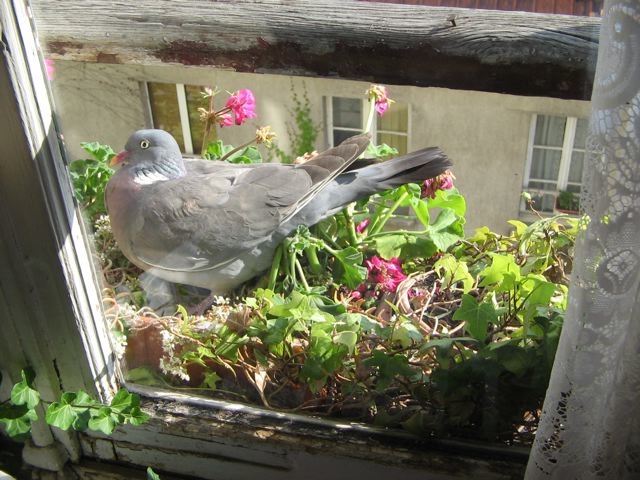
An egg appeared.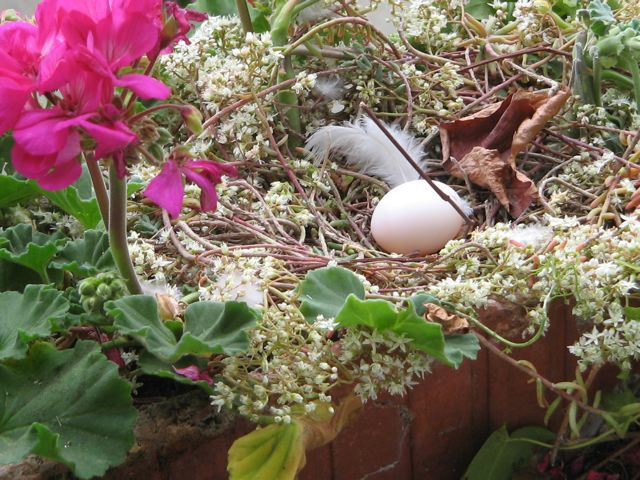
Then there were two.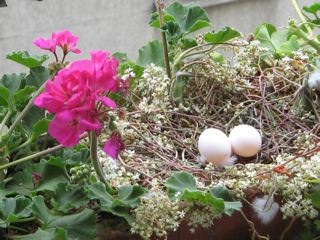
Pigeons mate for life and both male and female sit on the eggs, taking turns in long shifts. The eggs take about 18 days to hatch.
The pigeons just sit and sit and sit, changing position every hour or so, to face in different directions. When one bird flies in to start a shift, the other takes off immediately. No chit chat.
I named the couple Patience and Constant, because they were.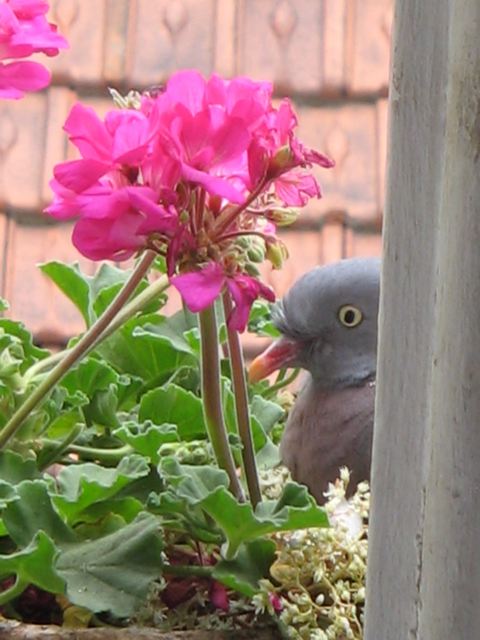
The nest was only an arm’s length from my desk. In the first week or so, I kept the lace curtains drawn at the window so the pigeons were not disturbed by my movements, but I could still see them through the lace.
I could open one side of the window very carefully, and very slowly. I had never been so close to this sort of thing before. It was fun and fascinating to watch the process.
I became accustomed to having a large Wood Pigeon in my window, around the clock. We co-existed peacefully.
Constant, the male, would occasionally bring an extra twig for the nest.
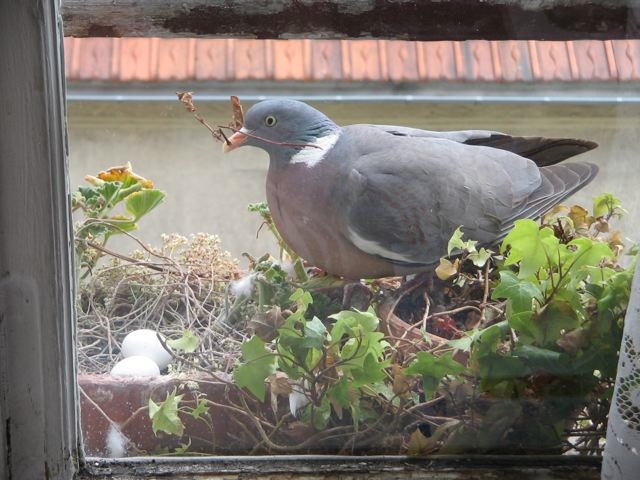
At about 8pm on Sunday, 13 July, there was the usual "changing of the guard." Constant took off a minute before Patience arrived for the night shift. In that minute I noticed one of the eggs had cracked. Exactly 18 days after the first egg had been laid, it was beginning to hatch! Patience arrived and did not seem excited. I was much more excited than she was. She arranged herself on the nest. Nothing more happened for the rest of the night.
The next morning, on 14 July (Bastille Day here in Paris) a little squab had emerged into the sunshine.
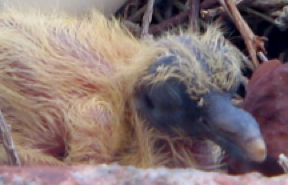
The squab, age 1 day. Isn't she gorgeous? Baby pigeons are born blind and open their eyes within about 5 days.
I wondered what the parent pigeons would do with one squab born and one egg still to incubate. I quickly learned they just sit on both. The newborn has to be kept warm. The two parents continue to take shifts, sitting on the nest, 24/7.
Both parents manufacture "pigeon milk" from their own food, which they give directly to the squab in beak-to-beak feedings.
In the photo below, Constant feeds the baby. You can see a bit of the milk in his beak.
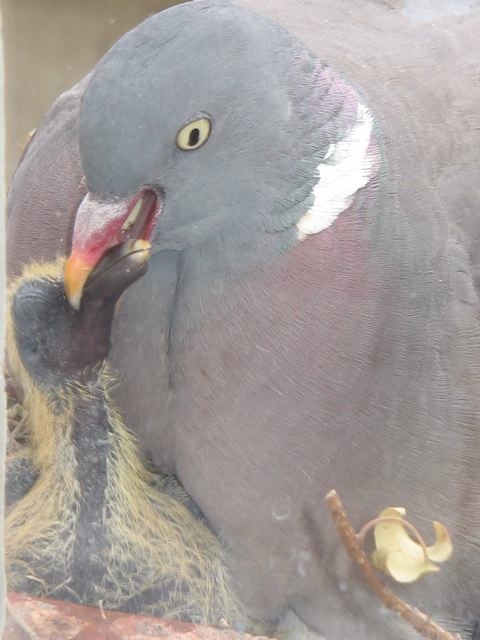
I waited for the second egg to hatch to name the babies. It had started to crack the day the first was born. Four days after the first hatching, it had still not hatched. I learned that at that point, it never would. That is nature's way of ensuring that one squab is not so much bigger than the other that it will dominate and get more food. So one egg had died. There would only be one baby.
I named her Hope.
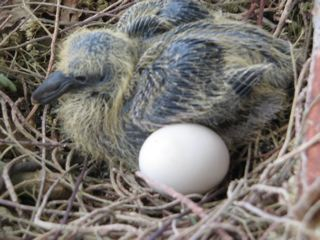 By the time a squab is 10 or 11 days old, it can keep itself warm, and the parents begin to leave the squab alone in the nest, having been tied down to it for a solid month. One or the other parent returns every 3 to 4 hours for feedings.
By the time a squab is 10 or 11 days old, it can keep itself warm, and the parents begin to leave the squab alone in the nest, having been tied down to it for a solid month. One or the other parent returns every 3 to 4 hours for feedings.
On Hope's very first night on her own, there was a horrible rainstorm. At 4am I awoke to the sound of a torrential rain pouring down. I found Hope all alone in her nest, soaking wet, wide awake and looking at me through the window. What could I do? I consulted my pigeon-expert pals on pigeon-talk.com (my user name is Paris and you can look up my threads!). They advised me to make a bed for her and bring her inside. So I did.
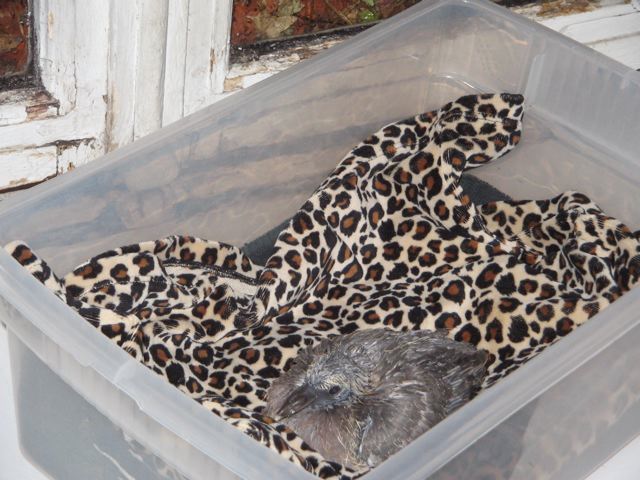
I set my alarm for 6am and went back to bed. When the alarm went off I got up and put Hope back in her nest. It was raining lightly, but I couldn't risk her parents coming back to find an empty nest. They would think she had been snatched by a predator, and not come back. I waited anxiously for the return of a parent that morning. Finally Constant came, and fed the hungry Hope, who had been drying out in the morning sun.
The next night it was raining again, although not so hard. I had been warned not to handle her too much, but I wanted to keep her nest dry. So I put up an umbrella over the flower box and lashed it to the window rail. Oh, she just loved that. She preened, she dozed, she squeaked at me, and she dozed some more, all snug in her nest.
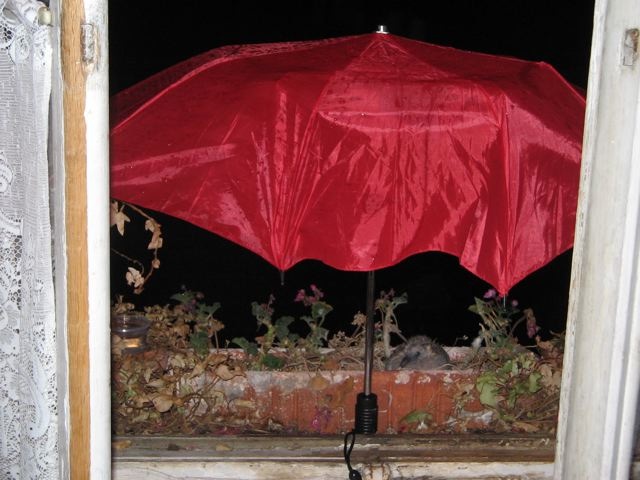
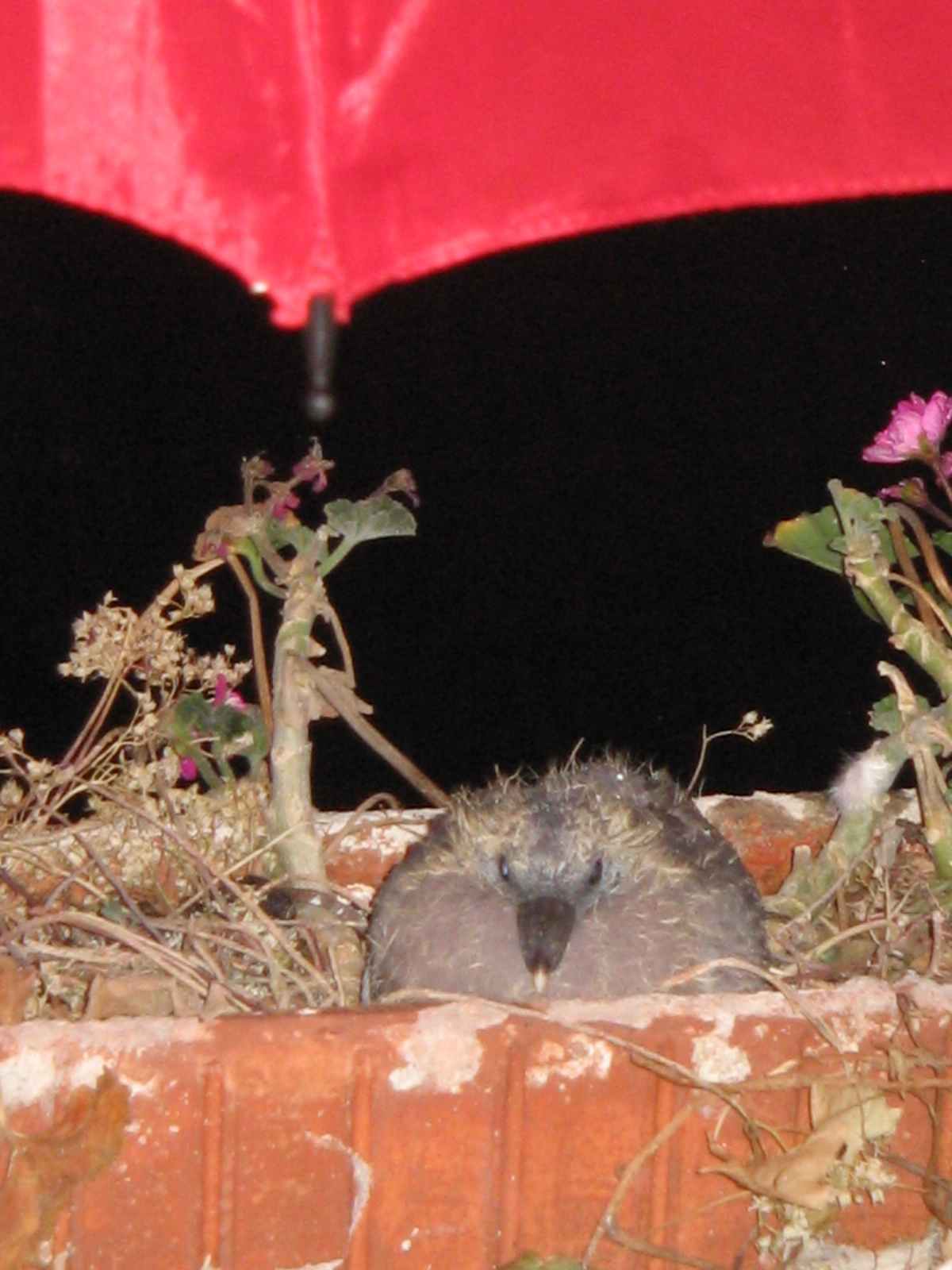
Did you know that pigeons pant? As for dogs, it's a self-cooling mechanism. The flower box got the morning sun and poor Hope would be panting by 10am. Babies that age don't know how to drink water. I finally thought of giving her shade, and bought a miniature sunflower tree. She immediately crawled over into its shade and took a nap. Shade is the best gift you can give to a pigeon who is stuck on a nest in the sun.
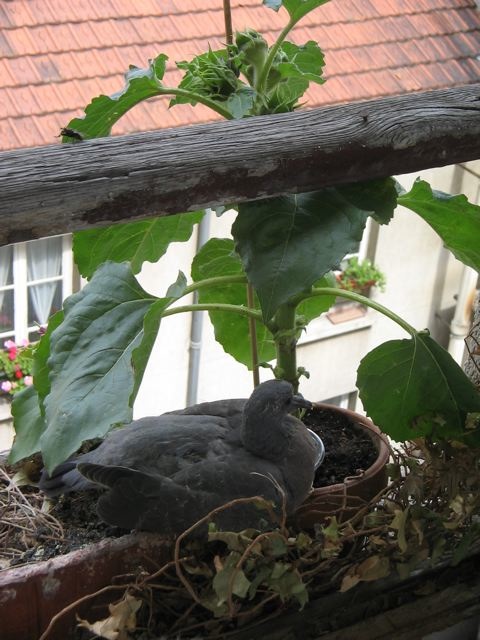
Hope doubled in size every week in the first three weeks of her life. When she was about 17 days old, she began to stretch her wings. First, she would stretch her left wing and left leg. Then the right wing and right leg. Then both wings. She would prance around the flower box, putting on a whole show for me, very proud of herself. Oh, she was fabulous. 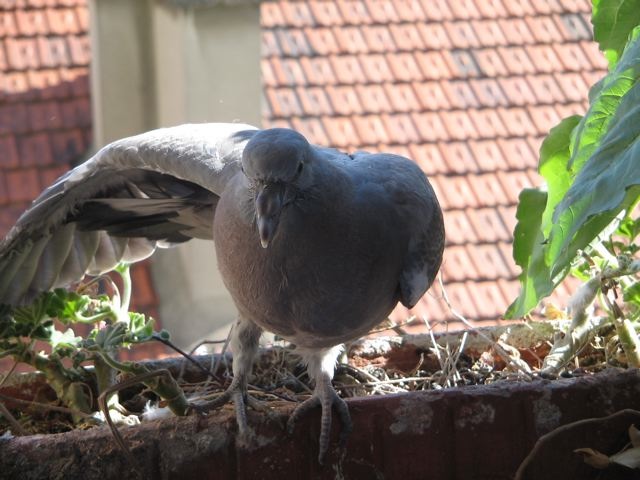
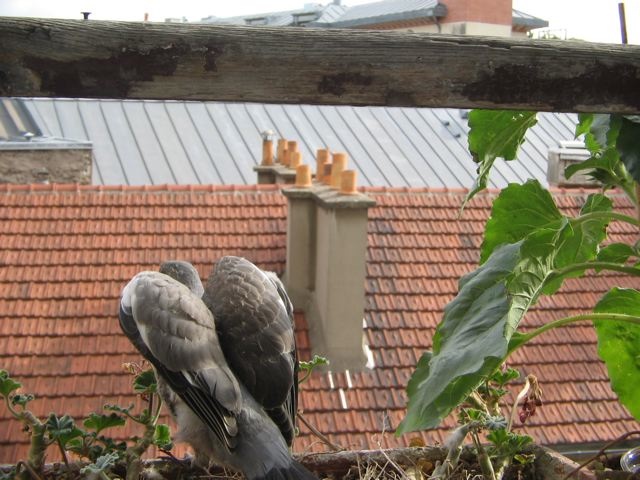
Then she began to notice the world beyond the flower box. Her attention turned outward. She was getting ready to leave.
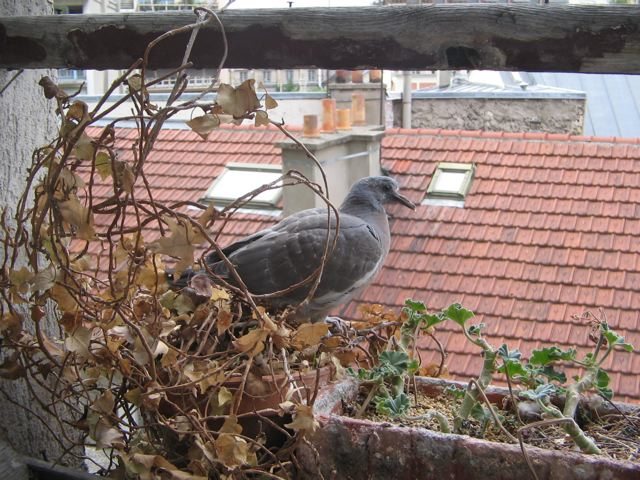
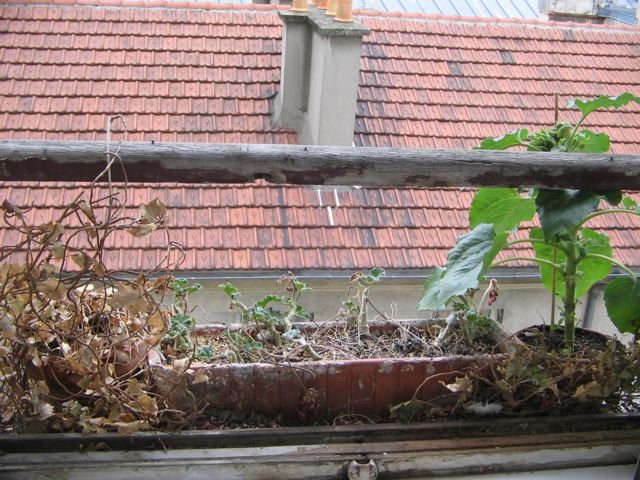 Many a bird has fallen to its death from its nest. I forced myself to look down the four stories to the pavement. Nothing there. Not even a splat mark. I went down to the courtyard with her bed, in case she had landed there. Nothing. I made myself look in the garbage can, because if the building janitor had found a dead bird on the pavement, he would have unceremoniously dumped it in the trash. The garbage can was still completely empty from the morning's trash collection.
Many a bird has fallen to its death from its nest. I forced myself to look down the four stories to the pavement. Nothing there. Not even a splat mark. I went down to the courtyard with her bed, in case she had landed there. Nothing. I made myself look in the garbage can, because if the building janitor had found a dead bird on the pavement, he would have unceremoniously dumped it in the trash. The garbage can was still completely empty from the morning's trash collection.
Back upstairs in my office I gazed out and noticed a small bird on an antenna, about 20 meters away and 6 stories high. Eventually it stretched a wing and a leg. Then the other side. It was definitely a very young pigeon. I began to have hope it was Hope.
The little bird did not move from that antenna for three solid hours. I could sense that it was not sure what to do next, or how. 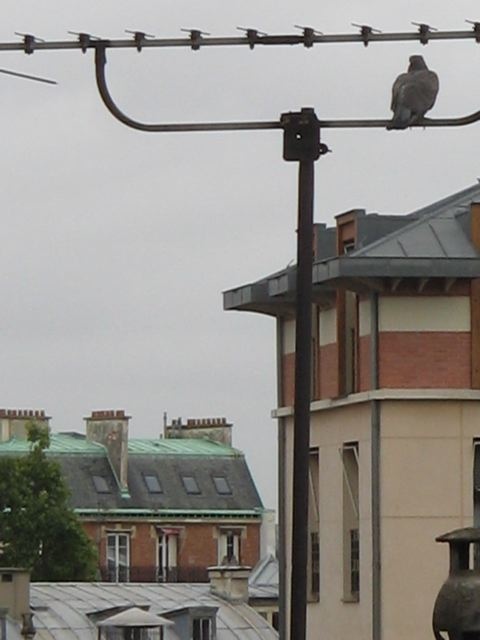
Constant flew over to the antenna and together they fluttered down to a roof and he fed the little one. Then I knew it was Hope and I was elated. Off they went for flying lessons. Hope was back in her nest the next morning! She stayed most of the day, napping and visiting, a happy but tired little bird.
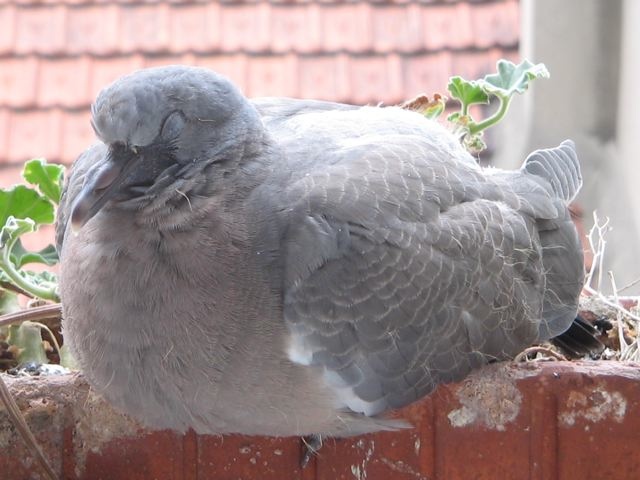
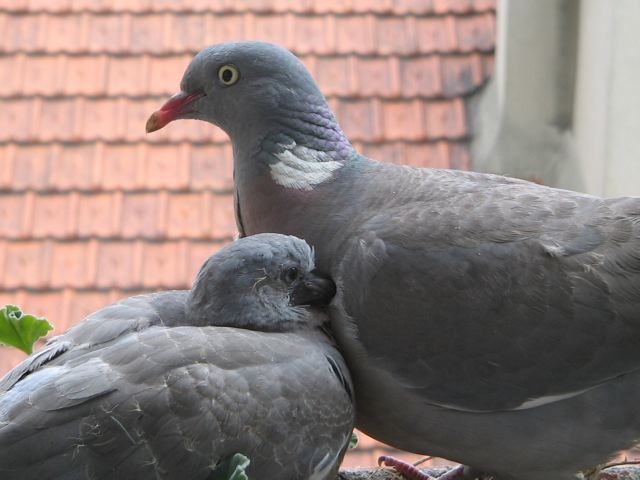 Hope came back to rest in her nest three times during the week after she flew for the first time. After that she stayed out with her flock.
Hope came back to rest in her nest three times during the week after she flew for the first time. After that she stayed out with her flock.
Now Hope comes to the flower box every day and has a little snack. The distinctive white neck markings of the Wood Pigeon began to appear in the Autumn and were fully formed when she was 6 months old. She is plump and beautiful.
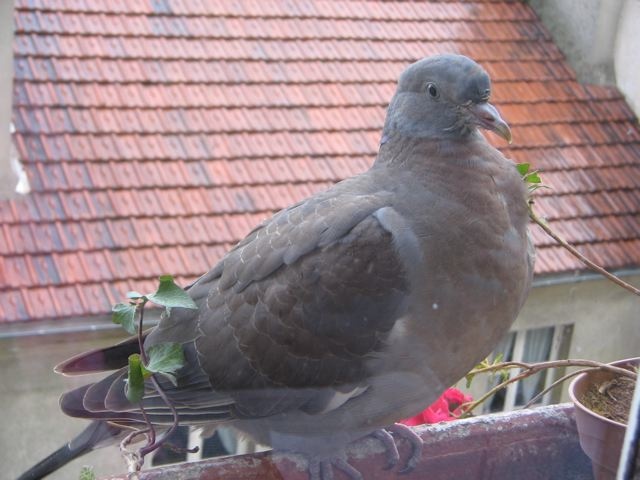 But she doesn't stay to visit anymore. She knows me, but she likes to pretend that she doesn't, reminding me that she is a wild bird, and always was, and always will be.
But she doesn't stay to visit anymore. She knows me, but she likes to pretend that she doesn't, reminding me that she is a wild bird, and always was, and always will be.

Hope flies, forever free.

It saves going to heaven."
— Emily Dickinson

It sings because it has a song."


Man loved the birds and invented cages.”
— Jacques Deval, Afin de vivre bel et bien

and I felt that I was more distinguished by that circumstance that I should have been by any epaulet I could have worn.”
— Henry David Thoreau (1817 - 1862)

— New England Proverb

I would rather have birds than airplanes.”
— Charles Lindbergh (1902 - 1974)

http://www.youtube.com/watch?v=1tRP3o-tSMc
Watch Constant feed Hope, set to Debussy's "Reverie":
https://www.youtube.com/watch?v=-8ban8gkiww
home
pigeon-talk.com
21 amazing facts about pigeons
See over 10,000 great photos and images about everything pigeons and doves on my Pinterest dedicated board.
o f
H O P E
“Ah, but a man’s reach should exceed his grasp —
or what’s a heaven for?”
— Robert Browning
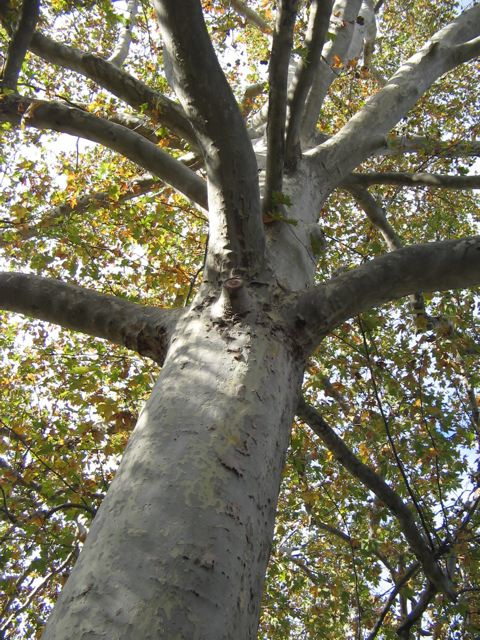
Would we bother reaching for anything without hope? Would we even try?
What is hope? Hope is a feeling of desire, belief or expectation that something good will happen — or at least could happen. Hope is believing in possibility, it is a kind of optimism. It is an open mind and a willing heart.Hope is an attitude, and a choice.
Hope has been denigrated by some — as delusional, or as a poor second to faith, or as just plain foolish in the face of "reality." Yet to be hopeless is to feel helpless, which is disempowering. Hope is therefore a type of power, a creative energy which enables us to reach outward, stretch upward and move forward.
There have been many great minds who understood the eternal and enormous value of hope. Here are some favorite quotes about hope:
"Never deprive someone of hope; it might be all they have."
— H. Jackson Brown, Jr.
something to do, something to love,
and something to hope for."
— Allan K. Chalmers
"Once you choose hope, anything's possible."
— Christopher Reeve
"Most of the important things in the world have been accomplished by people who have kept trying when there seemed to be no hope at all."
— Dale Carnegie
"If you lose hope, somehow you lose the vitality that keeps life moving, you lose that courage to be, that quality that helps you go on in spite of it all. And so today I still have a dream."
— Martin Luther King
"No pessimist ever discovered the secret of the stars, or sailed to an uncharted land, or opened a new doorway for the human spirit."
and achieves the impossible."
— Charles Caleb Colton
Cicero (106 BC - 43 BC), Ad Atticum
Stephen Ambrose (1936 - 2002)
Robert Louis Stevenson (1850 - 1894)
Samuel Johnson (1709 - 1784)
— Edward Gibbon
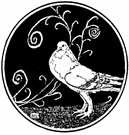
Jane Grey, PhD — Conscious and Creative Living
Personal and Professional Holistic & Spiritual Development
Paris, France
• Home • Holistic Life Coaching • Spirituality • The Inner Spiritual Journey • Meditation • Intuition • Reiki • Numerology
• Self-Healing • Conscious Creation • Speaker and Officiant • Hope • Gratitude • Paris • Quotes • FAQ • Bio • Contact
hopeinparis.com
There's always Hope in Paris

Content and web design, © copyright 2021 by Jane Grey. All rights reserved.
Save